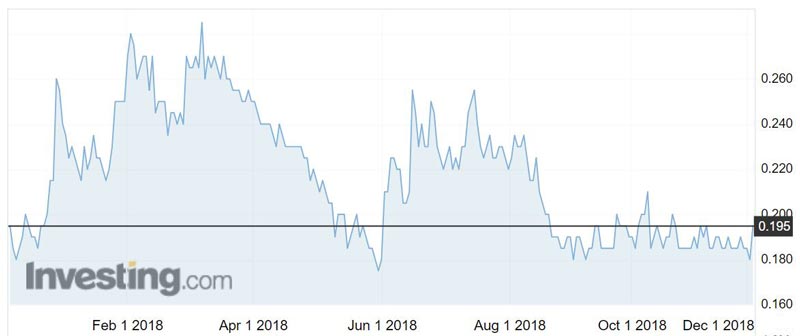Havilah may have found a mammoth new iron ore deposit in South Australia

It's looking to be big, really big Pic: Getty Images
Havilah Resources says it’s made a major new iron ore discovery in South Australia.
“At this stage we can only guess at the potential size of the deposit, but based on the thickness of the iron formation and its areal extent, it is apparent that there exists significant resource potential,” technical director Chris Giles told investors.
The news sent shares up over 8 per cent to 19.5c on Tuesday morning.
The discovery was made after a recent 13-hole, 3510m drilling program in the Grants iron ore basin hit a thick iron formation in multiple holes over an area of at least 3.5 sq km.
The thickest intercept drilled was 297m and it ended in mineralisation.
“Ironically, the iron-rich lateritised cap on the deposit was mined from the Grants quarries by BHP in the 1890s, as flux for the Broken Hill smelters, but the primary iron deposit has lain essentially unrecognised until now,” Mr Giles said.

The drilling was done by Gupta family-backed SIMEC Mining as part of its due diligence investigation of the commercialisation potential of Havilah’s (ASX:HAV) Maldorky and Grants iron ore projects.
Drilling so far has covered only about 25 per cent of Grants iron ore basin.
Mr Giles told Stockhead that SIMEC was chasing about 1 billion tonnes of iron ore in the region.
Havilah so far has iron ore resources totalling about 450 million tonnes, but still has to define a JORC-compliant resource for the new discovery.
JORC refers to the mining industry’s official code for reporting exploration results, mineral resources and ore reserves, managed by the Australasian Joint Ore Reserves Committee.
SIMEC had an initial deadline of the end of 2018 to complete its due diligence, but has requested an extension.
Mr Giles expects SIMEC will need at least another six months and would likely undertake more drilling to firm up a resource before it decides whether or not to continue work on the project.
“They’re certainly gathering all the data as fast as they can to make the decision,” he said.
“Currently drilling at this new discovery is not close enough for a JORC resource — it’s a kilometre line spacing, it’s very, very sparse drilling at the moment, but there’s no doubt there’s geological continuity but they have to show that with more detailed drilling.
“So there will have to be another round of drilling to bring it up to a JORC resource status, inferred at the very least.”
Mineral resources are categorised in order of increasing geological confidence as inferred, indicated or measured.
- Subscribe to our daily newsletter
- Bookmark this link for small cap news
- Join our small cap Facebook group
- Follow us on Facebook or Twitter
UNLOCK INSIGHTS
Discover the untold stories of emerging ASX stocks.
Daily news and expert analysis, it's free to subscribe.
By proceeding, you confirm you understand that we handle personal information in accordance with our Privacy Policy.








